Colored Sapphires
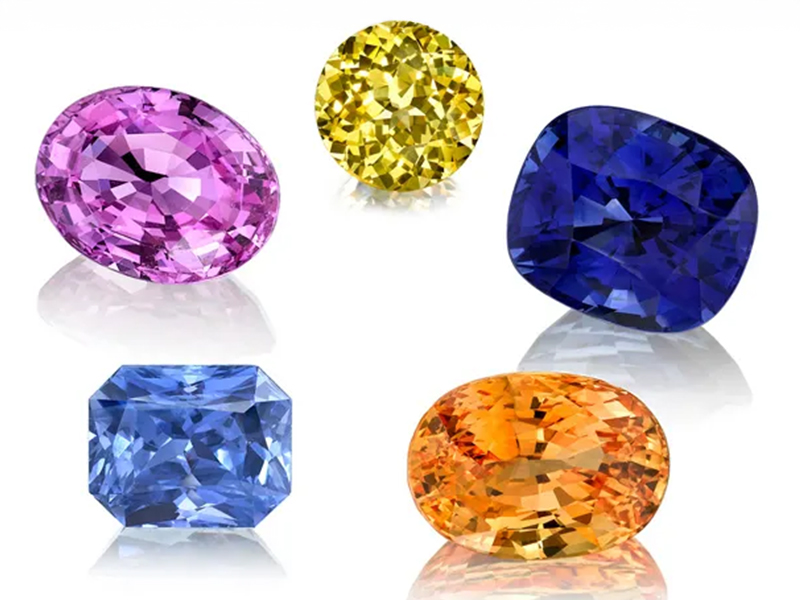
Colored Sapphires
Are Sapphires better than Diamonds?
So they say Diamonds are girl’s best friend. Or are they..? Well here is an interesting new trend; Colored Sapphires are becoming a favorite stone, and of course, not just with the ladies! Needless to say, the myriad colors from blue, pink and yellow, to white and even green, with a million mesmerizing hues, you will be spoilt for choice at the sight of this spectacular array of glistening charms.
So what makes the Sapphire so unique and gain increasing preference versus a Diamond? There is a touch of class and style in wearing a Sapphire on your body. Some set it on souvenirs or even a piece of Jewelry. Adorning this gem stone will not only make you feel good, but give that little image boost you desire; a certain je ne sais quoi. Sapphires have been special for some time, and even more so since Princess Kate Middleton started sporting a royal Blue Sapphire that was once worn by Princess Diana herself. This set off a trend where ladies opted for Blue Sapphires as the stone of choice for an engagement ring, or even the wedding ring – aptly adding to ‘something blue’. Of course, this is the stone of royalty, and fit for a princess, so why not..?
Gem stones tell a story of a million years. Imagine this. A gem stone is formed in the rocks of earth’s crust, evolving over the years. A part of the planet’s history since the days of mythical creatures, dinosaurs and evolution. This rock has a soul of its own, for it has been part of a bygone era that we can only imagine. Now picture this creation of nature on a piece of your jewelry, around your neck, perhaps on a finger; and you are enveloped in timeless beauty. We often forget the deep value of this stone as an embodiment of the evolving universe and solar system, but this is what makes it so precious, in addition of course to its magnificence.
The Sapphire is not just worn for beauty and value. It means many things to different cultures. Not just the Royals of the modern world, but princesses of past revered this stone. Ancient Persians loved them, and even believed the earth was built atop a very large Blue Sapphire. Sapphires are known to symbolize wisdom, virtue and good fortune for some, while other cultures believe in its ability to calm the spirit and heal the body. This is what makes it special, and is worn by many irrespective of gender, for they believe in the positive energy it could bring to their mind, body and spirit.
If you are trying to decide between a Diamond and Sapphire, here are some tips to gauge its value. Diamonds are traditional, but Sapphires are modern with a classic touch. It can sit perfectly on vintage or contemporary jewelry designs, matching well with any kind of metal; white gold, yellow gold, rose gold, silver or platinum. A Blue Sapphire on white gold, a Pink Sapphire on rose gold or Yellow Sapphire on yellow gold – feel free to try a few combinations and see what suits your style and skin color. There is a stone for every skin tone.
If you are looking for a gem that is the epitome of ‘you’, the Sapphire is it. Each stone is unique from the other with many color variations, different cuts and sizes making it one of a kind; with an exclusive identity of its own. The Padparadscha Sapphire is the rarest of all Sapphires, originally found in Sri Lanka. It comes in stunning hues of pink and orange along with streaks of many rich colors. However, out of all types of Sapphires, the Blue Sapphire is still the most in-demand and universally renowned stone. A perfect Blue Sapphire is one that emanates a rich deep blue color, more specifically cornflower blue and royal blue, and is known to be of highest value. Pink and Yellow Sapphires are also becoming a favorite, specially used in rings, pendants and ear studs. Sapphires have now become the main stone, while diamonds are used for frosting jewelry, complementing the vivid hues of the colored stone.
In terms of resale value, the Sapphire wins, not only making it an ideal family heirloom as its value grows over the years, but also as an investment which can be sold for a higher price later. The unique advantage though, is the cost. In general, a one-carat Sapphire would cost less than a one-carat Diamond, making Sapphires a lot more affordable than Diamonds, and great value for money. This gives you the opportunity to go for a bigger carat size gemstone while staying within the same budget.
As for the choice of gemstone? Well we suggest adding some color to your life. A Sapphire will most definitely stand out and sparkle in all its glory. Some choose stones that enhance the color of their eyes, skin or hair. You can even pair it with an outfit that works to your advantage. Go with the choice that brings the best in you! Diamonds are forever they say, but Sapphires are timeless.
7 Stunning Colored Sapphires You’ll Instantly Adore
When one hears the word “sapphire,” the mind almost invariably conjures an image of a deep, velvety blue—the color of royalty, twilight skies, and the boundless ocean. For centuries, this singular hue has defined one of the world’s most cherished gemstones. But what if that was only one chapter of a much more vibrant story? Prepare to explore the breathtaking, kaleidoscopic world of colored sapphires. Beyond the iconic blue, the sapphire family flourishes in every shade of the rainbow, offering a spectacular palette for self-expression and connoisseurship. Here in Sri Lanka, the heartland of these magnificent gems, we understand that the true magic of the sapphire lies in its diversity. This guide will take you on a journey beyond the blue to uncover the science, beauty, and allure of these extraordinary natural treasures.
Table of Contents
- The Science Behind the Spectrum: What Exactly Are Colored Sapphires?
- A Family Affair: The Corundum Connection
- The Chemistry of Color: Nature’s Secret Recipe
- A Journey Through the Rainbow: Exploring 7 of the Most Popular Colored Sapphires
- The Legendary Padparadscha: The Undisputed King of Colored Sapphires
- Pink Sapphires: Hues of Modern Romance
- Yellow & Golden Sapphires: Capturing the Sun’s Radiance
- Green Sapphires: The Verdant Beauty of the Natural World
- Purple & Violet Sapphires: Shades of Royalty and Mystique
- White Sapphires: The Diamond’s Dazzling & Pure Alternative
- The Enigmatic Star Sapphires: A Celestial Phenomenon in Gem Form
- A Buyer’s Guide: How to Evaluate the Quality of Colored Sapphires
- Beyond the 4Cs: A Specialized Approach
- Color: The Most Crucial Factor for Fancy Colored Sapphires
- Clarity: Understanding Inclusions in Colored Sapphires
- Cut: The Art of Unleashing Brilliance and Color
- Carat Weight: The Intersection of Size, Rarity, and Value
- Provenance and Prudence: The Importance of Origin and Treatment for Colored Sapphires
- Why Ceylon (Sri Lankan) Colored Sapphires Command a Premium
- An Essential Note on Gemstone Treatments
- Frequently Asked Questions (FAQs) About Colored Sapphires
- Conclusion: Embrace Your Color in the World of Sapphires
1. The Science Behind the Spectrum: What Exactly Are Colored Sapphires?
To truly appreciate the diversity of sapphires, we must first understand what they are—and what they are not. The term “colored sapphires” (often used interchangeably with “fancy sapphires”) refers to any gem-quality sapphire that is not blue.
A Family Affair: The Corundum Connection
At their core, all sapphires belong to the mineral species Corundum. Corundum is a crystalline form of aluminum oxide (), a compound that in its pure, natural state is completely colorless. It is one of the hardest minerals on Earth, scoring a 9 on the Mohs scale, second only to diamond. This exceptional durability is a key reason why sapphires of all colors are so highly prized for use in jewelry intended for daily wear.
Herein lies a fascinating gemological rule: the red variety of gem-quality corundum is known as ruby. All other colors—pink, yellow, green, purple, orange, and even colorless—are classified as sapphires. Therefore, a ruby is technically a red sapphire, but by historical convention, it stands alone as one of the four “precious” gemstones alongside diamond, emerald, and the blue sapphire itself.
The Chemistry of Color: Nature’s Secret Recipe
The magnificent spectrum of color in sapphires is the result of Mother Nature adding a pinch of other elements into the corundum’s chemical structure as it formed deep within the Earth millions of years ago. These trace element “impurities” substitute for some of the aluminum atoms in the crystal lattice, altering how the crystal absorbs and reflects light, which we then perceive as color.
- Blue Sapphires: The classic blue is caused by the presence of trace amounts of iron and titanium.
- Pink & Purple Sapphires: Increasing amounts of chromium create hues from delicate pink to deep purple. A high concentration of chromium results in a ruby.
- Yellow & Green Sapphires: The presence of iron on its own can lead to yellow hues, while a combination of iron and titanium in a different state from blue sapphires can produce stunning green tones.
- Padparadscha Sapphires: The rarest and most valuable of all, this exquisite pink-orange gem is created by a delicate and precise combination of chromium and iron.
This alchemical process is entirely natural and chaotic, which is why finding a colored sapphire with a perfectly saturated, uniform hue is an event of incredible rarity.
2. A Journey Through the Rainbow: Exploring 7 of the Most Popular Colored Sapphires
While the sapphire palette is virtually infinite, several varieties have captured the hearts of collectors and jewelry lovers worldwide.
The Legendary Padparadscha: The Undisputed King of Colored Sapphires
Named from the Sinhalese word “padma raga,” meaning “lotus color,” the Padparadscha sapphire is the pinnacle of the fancy sapphire world. It exhibits a delicate, ethereal blend of pink and orange, reminiscent of a tropical sunset or the heart of a lotus flower. True Padparadschas are exceptionally rare, and for centuries, Sri Lanka has been the classic and most revered source. Their scarcity, combined with their sublime beauty, makes them one of the most expensive gemstones on the planet, often commanding prices that rival those of fine rubies and emeralds.
Pink Sapphires: Hues of Modern Romance
Once considered pale rubies, pink sapphires have now rightfully claimed their own prominent place in the jewelry world. Their popularity has soared as a vibrant and unique alternative for engagement rings. The color spectrum ranges from a soft, pastel baby pink to an intense, electric hot pink or magenta. The finest pink sapphires display a pure, strong hue without any secondary brownish or grayish tones, making them a joyful and feminine choice.
Yellow & Golden Sapphires: Capturing the Sun’s Radiance
Possessing a bright, cheerful disposition, yellow sapphires are another immensely popular choice. Their colors can range from a light, lemony pastel to a deep, rich golden or orange-yellow. In Vedic astrology, the yellow sapphire, known as “Pukhraj,” is a stone of great significance, believed to bring wealth, wisdom, and good fortune. High-quality yellow sapphires serve as a durable and often more affordable alternative to yellow diamonds.
Green Sapphires: The Verdant Beauty of the Natural World
For too long, the green sapphire lived in the shadow of the emerald. However, discerning buyers are now recognizing its unique appeal. While they don’t typically possess the same vivid glow as a top-tier emerald, green sapphires offer a stunning range of earthy and sophisticated hues, from a light minty green to a deep olive or khaki. A key advantage they hold over emeralds is their superior durability and clarity, making them a more practical choice for rings and bracelets without compromising on a rich, verdant color.
Purple & Violet Sapphires: Shades of Royalty and Mystique
Purple sapphires are a connoisseur’s dream. They occupy the beautiful middle ground between pink sapphires and blue sapphires, with chromium, iron, and titanium all playing a role in their coloration. Their hues can range from a light lavender to a deep, royal purple or a vibrant violet. Unlike amethysts, the best purple sapphires exhibit a far more intense saturation and a brilliant sparkle. They are a rare and captivating choice that stands out from the crowd.
White Sapphires: The Diamond’s Dazzling & Pure Alternative
The white sapphire is corundum in its purest form, completely colorless and transparent. For centuries, it was used as an alternative to diamonds, and it continues to be a popular choice today for those seeking a natural, affordable, and durable white gemstone. While it does not exhibit the same fiery brilliance (dispersion) as a diamond, a well-cut white sapphire has a bright, silvery sparkle that is elegant and timeless.
The Enigmatic Star Sapphires: A Celestial Phenomenon in Gem Form
Perhaps the most magical of all are the star sapphires. This is not a color but an optical phenomenon known as asterism. Within these gems are microscopic, needle-like inclusions of the mineral rutile, all aligned in a specific way. When a star sapphire is cut into a high-domed cabochon shape, light reflecting off these inclusions creates a mesmerizing star-like pattern that glides across the stone’s surface. While blue star sapphires are the most common, this celestial effect can occur in colored sapphires of almost any hue, making them a truly phenomenal collector’s item.
3. A Buyer’s Guide: How to Evaluate the Quality of Colored Sapphires
Assessing the quality of fancy sapphires requires a nuanced approach that differs slightly from the standard evaluation of diamonds or even blue sapphires.
Beyond the 4Cs: A Specialized Approach
While the familiar 4Cs—Color, Clarity, Cut, and Carat Weight—still apply, their hierarchy of importance shifts significantly. For these gems, color is king, queen, and the entire royal court.
Color: The Most Crucial Factor for Fancy Colored Sapphires
The value of a colored sapphire is overwhelmingly determined by its color, which is broken down into three components:
- Hue: This is the primary color of the stone (e.g., pink, yellow, green). The purest and most vivid hues are the most desirable.
- Tone: This refers to the lightness or darkness of the color. The ideal tone is typically in the medium range—not so dark that it appears black, and not so light that it looks washed out.
- Saturation: This is the intensity or richness of the color. High saturation (vivid, strong color) is highly prized and will always command a higher price than a stone with low saturation (grayish or brownish tones).
Clarity: Understanding Inclusions in Colored Sapphires
Unlike diamonds, where flawlessness is paramount, colored gemstones are expected to have some inclusions. These tiny internal features are a hallmark of a natural stone. According to the Gemological Institute of America (GIA), the standard for colored sapphires is that they should be “eye-clean,” meaning no inclusions should be readily visible to the naked eye. Inclusions that threaten the stone’s durability, such as large surface-reaching fractures, will significantly lower its value.
Cut: The Art of Unleashing Brilliance and Color
The primary goal when cutting a colored sapphire is to maximize its color and brilliance. A skilled lapidary will orient the rough stone to achieve the best possible face-up color, minimize inclusions, and retain as much weight as possible. This is why you will see a wider variety of shapes and cutting styles in colored sapphires compared to the standardized cuts for diamonds. A good cut should result in a lively stone with minimal “windowing” (a washed-out area in the center).
Carat Weight: The Intersection of Size, Rarity, and Value
As with all gemstones, larger colored sapphires are rarer and therefore more valuable. However, the price-per-carat does not increase linearly. It jumps significantly at key sizes (1, 3, 5 carats, etc.). For exceptionally rare varieties like the Padparadscha, this price increase is exponential, and a high-quality stone over 5 carats is considered a world-class treasure.
4. Provenance and Prudence: The Importance of Origin and Treatment for Colored Sapphires
Knowing where your gem comes from and how it has been treated is essential for making a wise and ethical purchase.
Why Ceylon (Sri Lankan) Colored Sapphires Command a Premium
Sri Lanka has been the world’s most reliable source of high-quality colored sapphires for over two millennia. Ceylon sapphires are renowned for possessing a unique luminosity and brilliance that sets them apart. This is often attributed to their superior clarity and a tendency towards brighter, more vibrant hues. When you acquire a Ceylon sapphire, you are not just buying a beautiful gem; you are owning a piece of gemological history from a region known for its ethical, small-scale artisanal mining practices. For those looking to invest in these authentic treasures, exploring a curated collection from a trusted source is paramount. At Prestige Gems Store, we specialize in providing certified, ethically sourced Ceylon colored sapphires, ensuring our clients receive a genuine piece of Sri Lanka’s natural heritage.
An Essential Note on Gemstone Treatments
It is important to know that the vast majority of sapphires on the market today (both blue and colored) have undergone heat treatment. This is a standard and widely accepted enhancement process where the stones are heated to high temperatures to permanently improve their color and clarity. This process mimics the natural heat and pressure within the Earth. Any reputable seller will always disclose if a stone has been heat-treated. Unheated sapphires of fine quality are exceptionally rare and command a significant premium.
5. Frequently Asked Questions (FAQs) About Colored Sapphires
1. Are colored sapphires as durable as blue sapphires? Yes, absolutely. All sapphires, regardless of color, are the mineral corundum and share the same excellent hardness (9 on the Mohs scale) and durability, making them suitable for all types of jewelry, including engagement rings.
2. What is the rarest of all the fancy colored sapphires? The Padparadscha sapphire, with its unique blend of pink and orange, is by far the rarest and most valuable of all colored sapphires.
3. How do I care for my colored sapphire jewelry? Caring for sapphires is easy. The best method is to clean them with warm soapy water and a soft brush. Due to their durability, they are also safe for professional ultrasonic and steam cleaning.
4. Are colored sapphires a good investment? High-quality, rare colored sapphires, especially unheated specimens from esteemed origins like Sri Lanka, have historically proven to be an excellent store of value and can appreciate over time. Padparadschas and fine pink, yellow, and purple sapphires are particularly sought after by collectors.
5. Why are some colored sapphires so much more expensive than others? The price is determined by the rarity and desirability of the color, combined with its quality (clarity, cut, and carat weight). A vivid, highly saturated Padparadscha or pink sapphire is far rarer than a yellow or green sapphire of the same size and quality, and its price will reflect that scarcity.
6. Conclusion: Embrace Your Color in the World of Sapphires
The world of sapphires is a vast and vibrant rainbow waiting to be discovered. Moving beyond the traditional blue opens up a universe of personal expression, allowing you to choose a gem that truly resonates with your personality and style. Each of these colored sapphires tells a different story—of passion, of sunshine, of mystery, of nature. They are a testament to the incredible artistry of the Earth, and here in Sri Lanka, we are proud to be the custodians of these remarkable gifts. We invite you to explore this dazzling spectrum and find the color that will tell your unique story for generations to come.



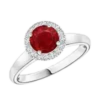
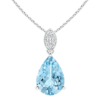
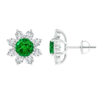
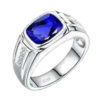
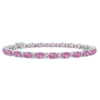

 Ladies Rings
Ladies Rings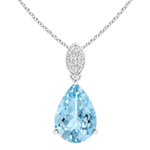 Pendants
Pendants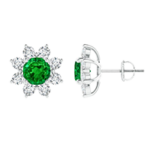 Earrings
Earrings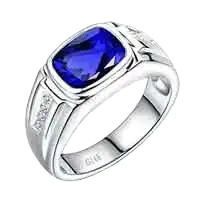 Gent’s rings
Gent’s rings